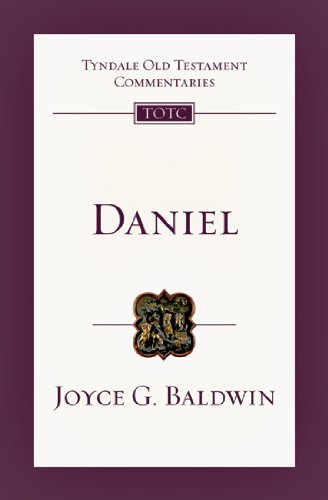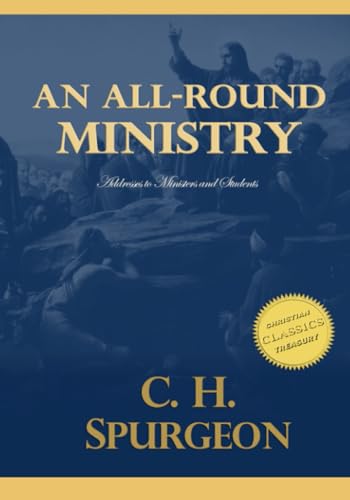When today’s student attempts to study the book of Daniel he or she finds that it is ‘an assured position of scholarship’ that the final form of the book was composed in the second century bc, and that what has been presented as prophecy is actually recorded history transposed in prophetic form. Those holding to the traditional date of the book (sixth century bc) are often branded by modern scholars as ‘obscurantist’ or ‘fundamentalist’. Moreover, one finds the majority of commentaries on Daniel passing over in relative silence the scholarly works which have argued for the traditional date of Daniel (cf. R. K. Harrison, Introduction to the Old Testament, 1977, pp. 1107ff., who gives a list of such works; most recently see B. K. Waltke, ‘The Date of the Book of Daniel’, Bibliotheca Sacra 133, 1976, pp. 319–329). It is hoped that this modern trend of neglecting scholarly conservative works on Daniel will not be continued with respect to Joyce G. Baldwin’s recent commentary, which presents well-developed arguments for a sixth-century bc origin and Babylonian background of Daniel. A comparison of Baldwin’s work with that of André Lacocque’s would be beneficial for the student desiring to see the two different kinds of approaches taken toward Daniel today, although it should be kept in mind that Lacocque’s assumption of a Maccabean Sitz im Leben and second-century bc date for the book is currently the accepted position by the literary-criticism school. Hopefully, this brief review might provide a starting point for an understanding and further comparison of the two commentaries.
It is obvious that the structural arrangement in both commentaries is different. Over a third of Baldwin’s work is a thorough yet concise discussion of the critical problems concerning the date, authorship and historical veracity of Daniel; here she sees the majority of evidence pointing to a sixth-century bc date of composition. Even though so much space is occupied by introductory matters, in the remainder of the book (pp. 77–210) the writer still fulfills the stated purpose of the Tyndale Commentary series i.e., ‘to help the reader of the Bible understand what the text actually says and what it means’. Nevertheless, the greatest weakness of the commentary as a whole is its brevity; it it wished that much more space would have been dedicated to exegesis. One will find especially profitable the excursus on the ‘son of man’ (pp. 148–154) and the ‘seventy sevens’ of Daniel 9:24 (pp. 172–178). While there is a verse-by-verse exposition, the reader is also made conscious of the general themes of the chapters and of the book as a whole. According to Baldwin, the ‘predominant message’ of Daniel is that God’s people will suffer and be threatened with extinction, but in the end their omnipotent God ‘will get glory by vindicating His name and will save them’ (p. 66). Throughout the commentary there is balanced discussion of interpretative difficulties and clear treatment of the possible solutions to be offered, although somewhat far-fetched interpretative proposals occasionally may be found (cf.the explanation of the ‘writing on the wall’ in Dn. 5, p. 124). The commentary will be of value to the non-specialist, as well as to the student and scholar.
In contrast to Baldwin, Lacocque dedicates only nineteen pages to introductory issues and concentrates more effort on the commentary proper (pp. 20–250), all of which is preceded by a brief but stimulating preface by Paul Ricoeur on apocalyptic hermeneutics and is appended at the end by a thorough series of indixes. (Lacocque expresses disappointment about the brevity of his introduction, which has been limited by the publisher of the French edition.) Each section of the commentary proper is broken down into three parts: (1) a translation by the author, (2) critical notes and, (3) an interpretative discussion. In addition, some of these commentary sections have brief introductions which focus on historical background and key interpretative issues, the most helpful of which comes in the studies of Daniel 7 and 12. Lacocque’s translation appears original and creative, but one sometimes gets the impression that this creativity is carried too far; for instance, he renders the phrase usually translated ‘Ancient of Days’ of Daniel 7:9ff. as ‘The-One-Who-Endures’, and the term often translated ‘saints of the Highest One’ in Daniel 7:18ff. is expressed as the ‘Most Haughty Saints’. The sections of ‘critical notes’ certainly contribute to a greater understanding of the text and have been written primarily with the teacher and student in mind. These critical comments primarily concern compared readings of the versions, text-critical remarks, lexical studies, grammatical explanations and observations from rabbinic literature; references to Jewish literature in all parts of the commentary are also helpful.
The reader will benefit from some of Lacocque’s interpretative comments, especially his repeated emphasis on attempting to discern the ‘re-use’ of earlier Old Testament literature in Daniel (so cf. the use of the Gn. 28 and 49 stone image in Dn. 2, p. 52; the use of Isaiah in Dn. 12:2–3, pp. 243, 245; the suggestion that Dn. 9 is a pesher on Jeremiah may also have a certain validity, p. 177f.). However, Lacocque goes too far when he makes such general statements as that the first six (chapters of Daniel) are midrashim on various Old Testament texts (p. 1), the Genesis 41 Joseph story ‘inspires all of Daniel 1–6’ (p. 26), ‘everyone agrees that Daniel 2 is a midrash on Genesis 41’ (p. 36) and, following H. L. Ginsberg, ‘chapters 10–12 of Daniel are a complete midrash of Isaiah’ (pp. 201, 204, 230, etc.). Some suggestions of Old Testament ‘re-using’ are helpful, but one should beware of overstatements of various Old Testament influences. Lacocque’s discussion of the son of man and his corporate nature should definitely be consulted (pp. 125–134, 146, 245–246). The suggestion that the son of man is to be seen as an enthroned priest in a spiritual temple is most interesting, although the desire to see such an enthronement picture as inspired only by the background of Antiochus Epiphanes’ profanation of the temple is unnecessary, since Nebuchadnezzar’s desecration of the temple could have provided the same background (pp. 124–126; cf. Ezr. 5:12–14). Also well worth noting is the observation that Daniel 7 ‘constitutes the veritable centre of the book’ (p. 122). Except for the critical notes, Lacocque’s commentary should be understandable to a general audience, although Baldwin’s work presents a somewhat more readable exegesis of the text. Both commentaries are valuable in that they interact with the important and recent literature published on Daniel.
The significant difference between the two commentators in their understanding of the Sitz im Leben and of the date of Daniel has possibly caused the different arrangement in the two books, especially with respect to the introductory sections of each. Baldwin, no doubt, has felt compelled to preface her commentary with an extended introduction concerning critical problems because her position of an early Daniel date is not in vogue among most modern scholars. In this introduction, she presents the positions of those arguing for a late date and then notes the evidence supporting the earlier date. Baldwin’s critical discussion at this point covers seven crucial areas of debate: (1) supposed historical inaccuracies of Daniel (note, especially, the problems involved with the names of ‘King Belshazzar’, ‘Darius the Mede’ and ‘Chaldean’), (2) the problem of the original languages, (3) particular problems concerning the date and unity of the book, (4) literary genre, (5) structure, (6) special interpretative problems, and (7) text and canon (cf. pp. 19–72). Much of what is said here is a summary of previous studies, but it has been gathered and presented in a convincing way. She concludes from this investigation that the relevant evidence provides no significant reason for doubting a sixth-century Babylonian background. Hopefully, scholars of Daniel will take notice of Baldwin’s special introductory effort, which this reviewer thinks has been successfully carried out.
In Lacocque’s much too brief introduction, only his view of Daniel’s Maccabean origin is explained, while, unfortunately, there is no mention of other Old Testament scholars holding to the early date of composition. In this omission, however, Lacocque is merely following the accepted trend among most contemporary scholars who consider a second-century bc date as ‘the assured position of scholarship’ and as a finally settled issue. According to Lacocque, the book of Daniel can be understood only against the background of the Maccabean conflict; thus, for him the goal of the book is ‘to render courage to the Jews persecuted by Antiochus Epiphanes’ (p. 9). He observes various parallels between Daniel and the Maccabean period and discerns this second-century bc background in every chapter of the book; as a result, this background is considered as the hermeneutical key to Daniel (for only a few examples of this cf. pp. 36, 92, 94, 106, 125–126, 242, 244, etc.). However, the likenesses he points out between Daniel and the Maccabean situation could just as well be seen as resemblances with an earlier Babylonian setting or could be understood as similarities due to sixth-century bc prophetic material predictive of events fulfilled in the period of the Maccabees. Lacocque occasionally acknowledges that not all the historical descriptions in the book best fit the Maccabean situation (pp. 74, 107, 141, 184, 186), but theorizes that such dissimilarities are to be attributed to certain pre-Maccabean traditions that were reworked by the second-century bc author of Daniel (cf. pp. 35–36, 44, 58, 74–75, 180, 186, etc.). No new arguments are proposed for the late Daniel date, but it becomes the premise upon which the whole commentary is built. It is probably this Maccabean presupposition that causes Lacocque to identify the kingdoms of Daniel 2, 7 and 11 as Babylon, Media, Persia and Greece (pp. 123, 139–140 and p. 65 of Baldwin), while Baldwin more correctly sees them as Babylon, Medo-Persia, Greece and Rome (pp. 65–68, 179–196), although allowing, with some justification, for a more flexible ‘symbolic meaning’ (pp. 65–68).
It would be an interesting task to compare some of the particular problems raised by Lacocque and the respective solutions offered by Baldwin, especially as these pertain to the dating issue; of the more significant comparisons would be the historical problem raised about Daniel 1:1 (Lacocque, pp. 7, 24–25; Baldwin, pp. 19–21), the issue concerning the pseudepigraphic nature of Daniel (Lacocque, pp. 1–7; Baldwin, pp. 47ff.), the difficulty involved with the origin of the name ‘Daniel’ (Lacocque, pp. 2–3; Baldwin, p. 82), the question of prophecy (Lacocque, p. 232, etc.; Baldwin, pp. 41–44, 64–68, 183–185, 199–202) and the dating implications of the words for the ‘musical instruments’ in Daniel 3 (Lacocque, pp. 58–59; Baldwin, pp. 33, 102–103). A few of the more important problems concerning dating are worth brief discussion. Lacocque mentions, as many before him have, that Daniel must have been written in the Maccabean period since it is not referred to in other literature until 145 bc; but 1 Enoch 14:18–22, which M. Black and J. T. Milik date as pre-Maccabean, could well be seen as quoting Daniel 7:9ff. if one allows for a sixth-century bc date of Daniel. Furthermore, Lacocque’s is an argument from silence and cannot be given much weight (cf. the criticisms of this kind of argument by R. D. Wilson, ‘Daniel Not Quoted’, Princeton Theol. Review 20, 1922, pp. 57–68, and ‘The Silence of Ecclesiasticus Concerning Daniel’, PTR 14, 1916, pp. 448–474).
Lacocque asserts that it is ‘uncertain’ whether Daniel was viewed as canonical in Qumran only fifty years after its Maccabean writing (164 bc), which, in light of the Maccabean assumption underlying his whole commentary, leads this reviewer to suspect that he is implying such ‘uncertainty’ to be harmonious with a second-century bc origin of the book (pp. 10–12). Such an implication would be understandable since scholarship sees the process of canonicity as taking much longer than fifty years from the time of composition; if Daniel is seen as canonical at this time, then the Maccabean dating loses some of its plausibility. Whether or not Lacocque consciously intends to argue in such an implied way, his conclusion about Daniel’s ‘uncertain’ cononical status in Qumran is too indecisive. He appears to base his uncertainty on Qumran scribal techniques, but does not state the whole case when he mentions that Daniel’s canonicity in Qumran must be questioned because ‘the format of the columns of writing and, sometimes, the material employed (Caves 1 and 6) are different from that habitually employed by the Essene library for biblical books’ (p. 12). However, it has been pointed out that other canonical books in Qumran have been found written on the same material and with the same column arrangement as Daniel, so that Lacocque’s ‘evidence is not infallible’ as a criterion of canonicity (cf. F. M. Cross, ‘Qumran Cave I’, JBL 75 [1956], pp. 122–123).
There is certainly more evidence in Qumran besides scribal habits, however, which should be considered before making final conclusions about Daniel’s canonical status. For example, in Qumran (4 Q Flor.) the basic formula ‘it is written in the book of the prophet’ introduces quotes from the Pentateuch, Isaiah, Ezekiel andDaniel 11–12 (literally, ‘as written in the book of Daniel the prophet’), so that the logical conclusion is that Daniel possessed the same authoritative or canonical status as these other Old Testament books (cf. further Baldwin, p. 72). Furthermore, this conclusion is supported by the observation that clear allusions to Daniel 4–12 appear throughout the Essene writings and that the maskilim and rabbim of Daniel 11–12 become technical names for the Qumran instructors (cf. 1 QS). If Daniel was written in Maccabean times, then one would have to consider it as having received canonical status only fifty years after its original writing—an unlikely possibility in view of current thinking about the process of canonization. Similar manuscript discoveries at Qumran of such books as Psalms, Chronicles and Ecclesiastes, which had been seen formerly as originating from the second century bc, have led scholars to posit a pre-Maccabean date for them (cf. Waltke, ‘The Date of Daniel’, pp. 319–329 and Baldwin, p. 45). The same pre-Maccabean judgment should also be made with regard to Daniel since ‘there would have been insufficient time for Maccabean compositions to be circulated, venerated and accepted as canonical scripture by a Maccabean sect’ (cf. Baldwin, p. 45, who quotes R. K. Harrison, Introduction to the Old Testament, p. 1127). Thus, it would appear that Lacocque’s second century bc prejudice is revealed more when he notes that the mention of ‘books’ as ‘the word of the Lord’ in Daniel 9:2 is sufficient evidence alone to conclude that Daniel viewed Jeremiah as canonical (p. 179), but will not allow the same kind of evidence in Qumran to lead him to such a judgment about Daniel. This reviewer has endeavoured to point out some of the Qumran evidence for Daniel’s canonicity, since Lacocque has omitted it from his discussion (cf. p. 12; for further comment consult Baldwin, pp. 44–46, 69–72 and the sources which she cites).
Baldwin notes the underlying presupposition which forces modern commentators such as Lacocque to opt for a Maccabean date; she explains that many scholars believe prophecy could not be foretold in such detail, especially as it is recorded in Daniel 11:1–39. Therefore, it is often thought that the author of Daniel must have been writing history ‘as if it were’ still future, ‘using an accepted literary form’ (Baldwin, pp. 182–185). That this assumption is the basis for Lacocque’s whole presentation is evident throughout, as he refers to the book of Daniel at various points in the commentary as a ‘tale’ (pp. 116, 121) and a ‘fiction’ (pp. 92, 102, 183). Baldwin’s general response to those who label the prophetic book of Daniel as ‘fiction’ is a telling commentary on many of today’s scholarly leaders of the church: ‘With regard to prophecy as foretelling, the church has lost its nerve. An earthbound, rationalistic humanism has so invaded Christian thinking as to tinge with faint ridicule all claims to see in the Bible anything more than the vaguest references to future events. Human thought, enthroned, has judged a chapter such as Daniel 11 to be history written after the event, whereas God enthroned, the one who was present at the beginning of time will be present when time is no more, may surely claim with justification to “announce from of old the things to come …” ’ (pp. 184–185).
Lacocque promises in the future to publish another book on Daniel (Daniel in His Time) and it is hoped by this reviewer that he will recognize some of the above arguments which are contrary to his own ‘assured position’—a position which should be radically re-examined and accordingly altered.
G. K. Beale
G. K. Beale is professor of New Testament at Reformed Theological Seminary in Dallas, Texas.






